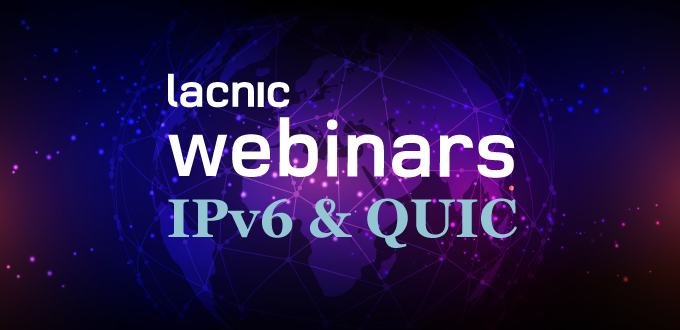IPv6 and QUIC: The Evolution of Internet Protocols
29/06/2020

After almost 40 years using the TCP/IP protocols, the Internet is facing the need to evolve to support the billions of devices already connected and the many millions more that are being connected at a dizzying rate as humans continue to add technology into our lives.
Given this scenario, the “classic” versions of the Internet protocols are limiting the evolution of the network, so it is necessary to move towards more modern models, said LACNIC CTO Carlos Martínez during the webinar titled New Developments in Internet Protocols: IPv6 and QUIC.
During the webinar organized by LACNIC and the IEEE (Institute of Electrical and Electronics Engineers), Martínez noted that IPv6 and QUIC represent the evolution of the network and transport layers of the Internet protocol stack.
While he highlighted the role that TCP has played in the growth of the Internet since its creation in 1980, Martínez added that “when so many adaptations have to be made, perhaps it is worth thinking about new options.”
In this sense, he stressed that, unlike IPv4, at network layer level IPv6 uses 128-bit addresses and a simplified header.
Martínez observed that IPv6 has already come a long way. “Between 32% and 33% of all Internet users worldwide are already using the protocol. It is simply a matter of time before it becomes the dominant protocol worldwide.”
As for QUIC, the evolution at Internet transport layer level, Martínez explained that the standard is not yet fully finalized. “Although there are already some implementations, QUIC has not yet been standardized. Despite this, it is gaining traction and will surely become the dominant Internet transport layer over the next two or three years.”
QUIC incorporates years of lessons learned and a number of security optimizations and enhancements. “QUIC is like an oldies party: it brings all the hits from the early 2000s into a single party. For the first time, they can all work together,” was how he summed up the protocol.
Click here to watch video of the presentations and the Q&A session.